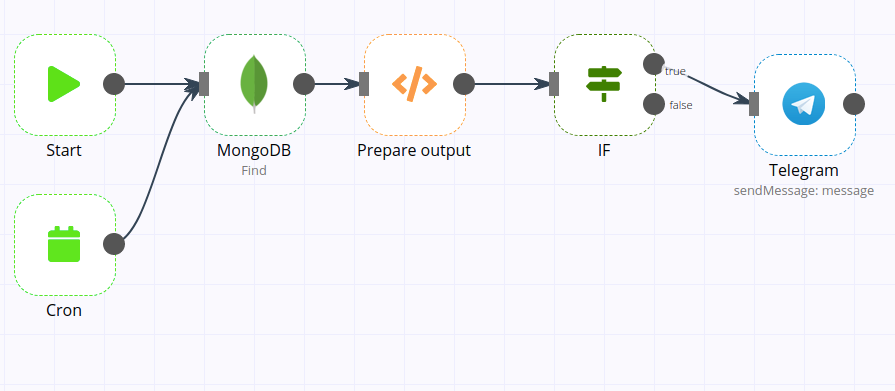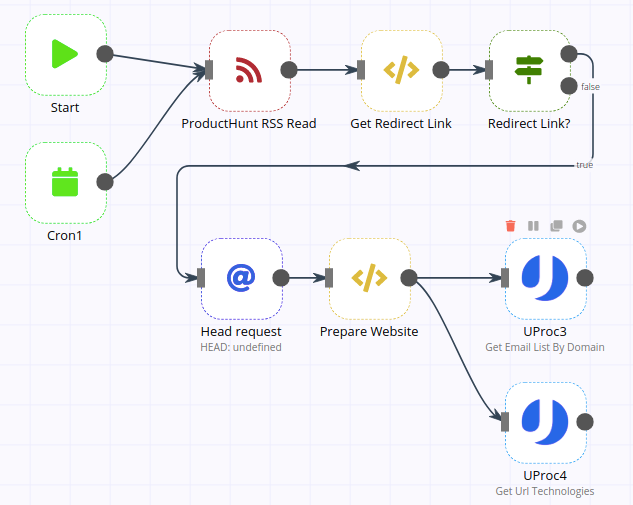Miquel Colomer Salas is the founder and CEO of uProc. He has been using n8n extensively to automate tasks both at work and in his personal life. In this interview, he shares with us how workflow automation has changed the way he approaches work in his daily life.
Can you tell me a bit about yourself?
I am Miquel, a crazy techie guy who loves everything and anything related to the internet and automation. I have worked as a CTO in several companies where operations related to data are crucial.
Just a few years ago, I started uProc.io, my side project. It is a platform that provides multiple data tools that help to clean, check, improve, automate or send data from multiple sources like forms, databases, or external services.
We use several combined techniques in uProc like internet scraping, Robotic Process Automation (RPA), and data curation.
Additionally, we provide specific products like black boxes that combine existing tools to get the best results with minimal effort.
What made you decide that n8n would be the most suitable tool for you?
We have tested multiple platforms like Huginn, Zapier, and Integromat, to automate a lot of things like sending emails and report generation.
Some time ago, we saw n8n on ProductHunt. We found it quite interesting, but we only started using it half a year ago for several customers and internal use.

n8n is useful for creating prototypes quickly at a lower cost. Some familiarity with the tool is needed if you’d like to create complex workflows, but once you acquire that, it’s easy to create complex workflows fast.
What kind of workflows are you building with n8n?
We are using n8n for a number of different use-cases.
Customers who do a lot of repetitive tasks and want to automate those tasks like:
- Checking overdue invoices at Holded to notify customers that payment has to be made.
- Generating Google Studio reports and updating data in Google Sheets.
- Sending daily status regarding current and forecasted monthly revenue via Telegram.

Internally, we are using n8n to:
- Check activity of MongoDB databases.
- Synchronization of new users between databases and external newsletter systems.
- Autofeeding databases by combining external feeds (like ProductHunt) and internal tools to discover emails and technologies to populate databases automatically.

Which integrations have you been using the most?
Currently, we are using uProc’s custom node to generate complex scenarios to automatically discover new prospective customers using search engines and LinkedIn results. We also apply email guessing as well as sending an email with an excel sheet containing the results.
This is quite useful because you can generate a massive database of qualified leads with no effort as opposed to doing manual searches in LinkedIn.
Additionally, we are using n8n to recover requests made by email to our platform and delivering on the requests made by the end-user in a faster way.
What’s the most useful feature of n8n for you?
Probably the Webhooks node as well as the Google Sheets, Gmail, and Amazon S3 nodes. These are some of the critical integrations that help us a lot.
We used to handle a lot of cron jobs manually. n8n easily handles all this without us having to push custom scripts to our servers. That was a very time-consuming task. Now, any tests can run in a moment without any pain.
Have you automated things with n8n for personal use as well?
Yes, I use n8n to send emails to customers when they don’t pay the overdue invoices 😉 This is interesting and opens up a lot of ideas to automate your life and make it more productive.
I have generated and evaluated multiple MVPs very fast instead of developing a custom solution from scratch by myself. And that’s a fantastic way to validate and pivot any solution with your potential customers.
What advice do you have for people looking to incorporate n8n in their teams or projects?
n8n is useful to automate lots of repetitive tasks in your workday using existing integrations with well-known services. You can even create your custom nodes.
If you are looking to generate solutions with no effort and extra cost, I recommend you to create your preferred workflows using n8n.
How do you envision using n8n in the near future?
I think that our solutions using n8n will grow fast in the next few years. I have a feeling that all the people will go this way. It makes no sense to do repetitive tasks manually, and automation fixes this issue.
Our focus must be oriented to be more productive with less effort and only perform tasks that have a high value. That’s the reason that all of us use n8n intensively.
It’s a solution that doesn’t tie you to a private platform. It allows you to control your data, and it’s quite useful to create new use-cases in small amounts of time.
I love tools that make my life easier and n8n is one of them. n8n is changing the way we do things now. Long live n8n 🖖
What’s a feature that you are looking forward to or would love to see in n8n?
One of them is probably the learning curve. Some concepts are a bit tricky and technical. A minimum tech level is required to achieve your goals with n8n.
Another feature would be to create workflows programmatically. This would be useful for a lot of situations such as machine to machine conversation. Instead of building workflows by hand, it would then be possible with an API.
n8n users come from a wide range of backgrounds, experience levels, and interests. We have been looking to highlight different users and their projects in our blog posts. If you’re working with n8n and would like to inspire the community, email Lorena to tell your story 💌




